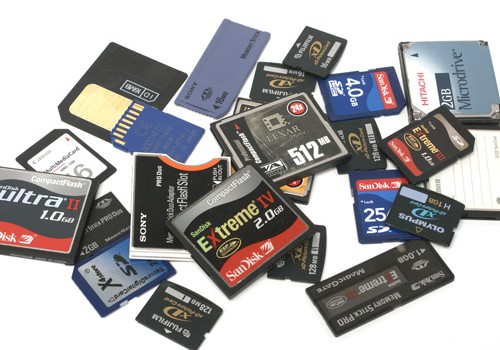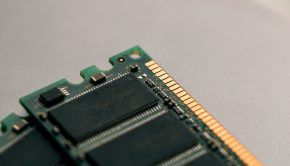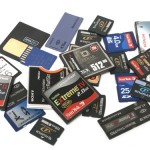Beginner’s Guide to Memory Cards
Today, most of us use a smartphone, a digital camera, camcorder, etc. Hence, we get memory cards for the same. But just like you see the processor, screen quality, RAM and what not about the device you buy, ever wondered what is it that you need to check about your memory card?
In this article we will be talking about theory related to memory cards, what to check before buying and what is the right choice for your device.
What are SD Cards?
Memory Card: A memory card (or a compact flash card) is an electronic flash memory (can be electrically programmed and retains data without power) data storage device used for storing digital information. They are commonly used in many electronic devices, including digital cameras, mobile phones, laptop computers, MP3 players and video game consoles.
SD Cards: Secure Digital or (SD) is a non-volatile memory card format for use in portable devices.
The Secure Digital standard is maintained by the SD Card Association (SDA). This technology has been spread widely and has been implemented in more than 400 brands across dozens of product categories and more than 8,000 models.
What’s the role of the SD Card Association (SDA)?
We are already aware of the compatibility issues we face in the tech world. The same happens with SD Cards due to the change in the technology (for the better). To notify buyers, the SDA uses several trademarked logos to enforce compliance with its specifications and assure users of compatibility. To know more about compatibility, we proceed further with more info (ah, tired?)
The SD format includes four card families in three form factors. The form factors are on the basis of the size of the cards – which are the original size, the ‘mini’ size, and the ‘micro’ size cards. The 4 families are the original Standard Capacity (SDSC) (1 MB to 2 GB, some 4 GB), the High Capacity (SDHC) (4 GB to 32 GB), the eXtended Capacity (SDXC) (32 GB to 2 TB), and the SDIO (input/output function with data storage).
Also, electrically passive adapters allow the use of a smaller card in a host device built to hold a larger card. Similarly, newer devices accept the older SD card models in contrast to the older ones which do not recognize newer cards.
Hence, the factors that are responsible for the prevention of use of a newer SD Card concluded are:
1. A newer card may offer greater capacity than the device can handle
2. A newer card may use a file system the host device cannot navigate
3. The host device is not designed according to the input/output which is provided by the SDIO card
4. The card family was changed (SD to SDHC or higher)
The above image shows different SD Cards on the basis of their sizes. The one you use for your phone is the microSD card (right).
Now, it’s time to end this section of the post. A little boring I know it must have been for some, but for those who want to read more on this, visit: http://en.wikipedia.org/wiki/Secure_Digital, which is also the source of content for this section. I must say, it was one of the best reads on Wikipedia ever.
The Shopper’s Guide
This is probably what you are looking for in this article. Without wasting much of your time, the following is what you need to check before buying your SD Card:
1. Class of SD Card – The SD Association defines standard speed classes indicating minimum performance to record video. Both read and write speeds must exceed the specified value. In simple words, the class of an SD card defines the speed of the memory card. Which is an easy estimation used widely as – Class 2 will give minimum 2 MBps write, Class 4 will give 4 MBps write & so on.
SD card’s speed is measured on the basis of – the time take to read and write information to the card. In applications that require continuous write throughout, such as video recording, the device might not perform well if the card’s class rating falls below the required rating. For example, a camcorder built for a Class 6 card may suffer dropouts or corrupted video if a slower card is used.
The speeds are defined in terms of video recording as following:
i) Class 2 for SD video recording
ii) Class 4 and 6 for HD – Full HD video recording
iii) Class 10 for Full HD video recording and HD still consecutive recording
iv) UHS Speed Class 1 for real-time broadcasts and large-size HD videos
Till now, we have been talking about the theoretical part. The question which must be going on in your mind is – what’s the right one for your device? Imagine this scenario – if you just buy a class 10 card and use it with a low end phone (say Samsung Galaxy Y), you won’t get the speeds defined as those phones cannot handle these speeds.
Also if you buy a high end phone (say Samsung Galaxy S III) and use a class 2 card, most of your HD videos almost stutter to death, not to mention the experience while recording in HD.
An easy suggestion: Class 4 is the best for phones; Class 6 or 10 is better suited for high end phones.
2. Your Needs: This is not related to tech but something you should take care of before buying. The high speeds cards are expensive and only buy them if you are interested in doing activities that demand that high speed. It’s always better to spend only on your needs and requirements.
3. Warranty: SD cards are at times likely to be corrupted. It is suggested that you try the card in the shop itself and buy cards only from the leading brands (SanDisk, Sony, Samsung are a few to name).
So, if you see a lower priced card of the same storage compared to the other, make sure you check the specs as that price might be keeping you in the dark. If you have any confusion regarding your device, card, etc., feel free to start a discussion in our Facebook community or in the forums.

















3 Responses to Beginner’s Guide to Memory Cards